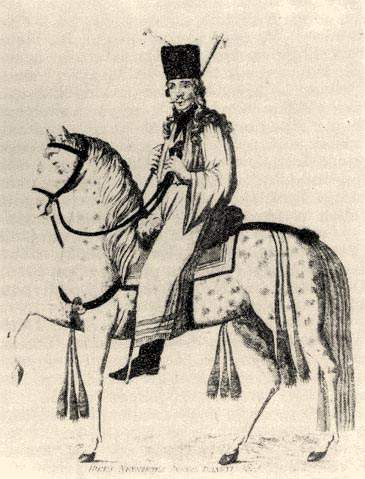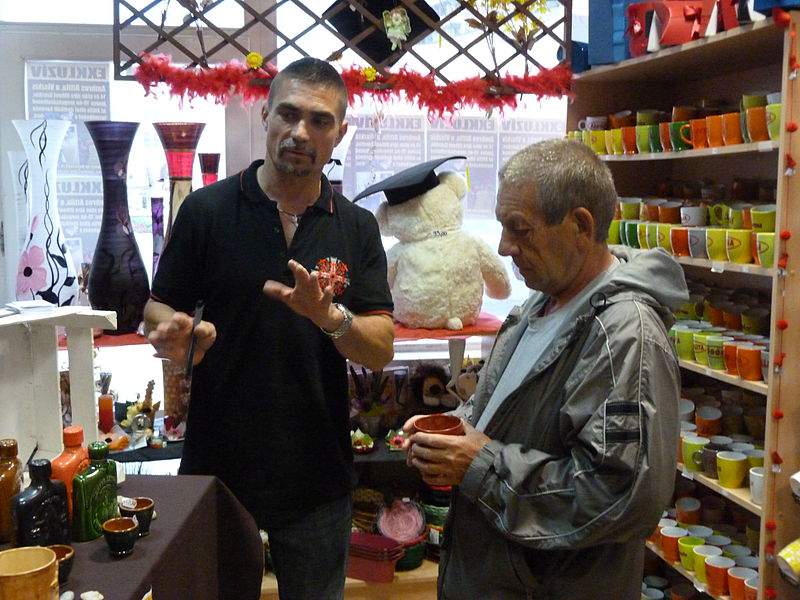Hungarian betyárs and their modern counterparts

What are the first things that immediately come to your mind about highwaymen? And what about Hungarian highwaymen? Would the corresponding Hungarian word, betyár, pop into your mind, or the name of some famous or rather infamous characters in the country’s history? Besides examining their history and the general atmosphere encompassing them, you can get to know more about the most prominent outlaws in Hungary from this article. Be ready for a journey back and forth in time!
Some historical background
The history of the Hungarian betyárs dates back to the 2nd half of the 18th century. They were more like outcasts and refugees, dismissed border fortress soldiers or wanderers due to political reasons. Of course, some of them got into this world because of disappointment in love affairs or previously committed petty sins.
As Mozaweb.hu points out, taverns at that time often hid the outlaws in the country, and in some cases, even separate rooms were kept ready for these criminals. A further interesting thing to mention is that some taverns were intentionally built at county borders because the cops could only keep order within their own county.
Until the 1830s, the public opinion was more or less consistent in their judgement. They were regarded more negative than positive characters, but from the 1830s onwards, their elevation as national heroes has begun. They were respected for standing up for good causes, like the interest of the nation.
As nimrod-mohacs.hu reports, the widespread image of the “valient betyár” was mostly thanks to the fact that it was seen as a meritorious act to circumvent those in political power between the Hungarian War of Independence and the Compromise.

Let’s meet some of these Hungarian outlaws of the 18-19th century!
Bandi Angyal (1760-1806)
András Ónody, alias Bandi Angyal, is the longest-remembered outlaw possessing national reputation. He was the 1st remembered “valiant betyár.” What is noteworthy about him is that – unlike his counterparts – he was a nobleman, and that is the major reason why people were intrigued by the story of the “noble outlaw.” Nimrod-mohacs.hu reports that he spoke 4 languages and was a highly educated person, and it is still not known why he was immersed in the world of criminals. He was notable for horse stealing and also for the handling of stolen goods in the Hortobágy.

Sándor Rózsa (1813-1878)
The most famous Hungarian betyár was undoubtedly Sándor Rózsa. He became a national legend already in his time and his name was known beyond the borders, too. He was the son of a famous horse-stealer and as it usually happens, the apple never falls far from the tree. He committed his 1st misdeed at the age of 23
when he stole two cows with his friends. Later, when he was imprisoned, he escaped after 10 months.
Throughout his life, it was a challenge to capture him.
With the permission of Lajos Kossuth, he organised a military group in 1848 to fight against the Serbians. However, within a few months, the group was dissolved due to indiscipline problems as they massacred many and plundered several homes. After the revolution, a manhunt was staged for him without significant success for years.
He was known for his clever hidings, sudden emergences, adventurous escapes and gunfights, and it is also rumored that people got cold feet even when he frowned.
His attempt to rob a train was doomed to failure when he and his peers picked up the railway. 🙂 He was severely wounded in the following fight and in the prison, his health deteriorated leading to his death.

Jóska Sobri (1809-1837)
Handsome, self-confident, cavalier, death-defyingly courageous… this is a description of Jóska Zsubri, alias Jóska Sobri, who was born on the Sobor farm after which he was later named. With his peers, he was infamous for his sudden raids in Transdanubia.
He was worshipped throughout his life and it is said that he was the ideal image of the “peasant Adonis” as even during public works, he was followed by the inquisitive eyes of maids and gentlewomen.
He committed suicide when in 1837 he and his troops got surrounded. While his peers were shot one after the other, he leant against a tree and, considering his hopeless situation, committed suicide.
Legends about him spread telling that he only caused harm to the wealthy, and did everything to help the poor.

Let’s check out the history of 3 modern age outlaws!
Attila Ambrus
Also known as “The Whiskey Robber,” Attila Ambrus was a well-known Hungarian bank robber in the 1990s. He got his name, “Whiskey Robber”, because he usually drank a whiskey in a nearby pub before the robberies. In fact, before his outlaw life, he was a professional ice hockey player between 1994-1999 when he came to Hungary from Transylvania.
A loveable image is created around his character, probably because he was seen as the “gentleman robber” who left flowers for women and sent bottles of wine to the police.
He robbed post offices, travel agents, banks, altogether 29. In 1999, he succeeded to steal around 50 million forints (167 million euros). Thanks to his good behaviour, he was released after 12 years instead of 17. The famous Hungarian director, Nimród Antall, made a movie about his life that is currently playing in cinemas: The Whisky Robber.

The Hungarian Bonnie and Clyde
The Hungarian couple, resembling the legendary American Bonnie Parker and Clyde Barrow, started their outlaw career in 1995. Their real names are László Fekete and Tünde Novák. Firstly, they stole 27 million forints (90 million euros) from the workplace of Fekete in Nyíregyháza, then in the following years, they lived on the stolen money. In 1999, they started something new: they stole cars with a gun.
They committed a very amateurish mistake, however. Once, they did not stop at the red traffic light, which was noticed by a policeman who started to chase them. Fekete wounded the policeman with his gun. Later during the manhunt the man, who was selling them guns, finally turned them in.

The misdeeds of these outlaws cannot be ignored, although, with the passing of time, people are more likely to forget what they have done. Sometimes, their deeds have also become idealised and represented as “charitable” actions, but as we have seen, this is not always true.
It is important, however, to mention that there is a way out of the world of outlaws, as the example of Attila Ambrus also proves. He now produces ceramic objects and has successfully reintegrated into society. Therefore, people should not be judged hastily only on the basis of who they have been.
Featured image: facebook/II. Kárpát-medencei Betyár találkozó
Source: mozaweb.hu; karparmedence.net.hu; nimrod-mohacs.hu





